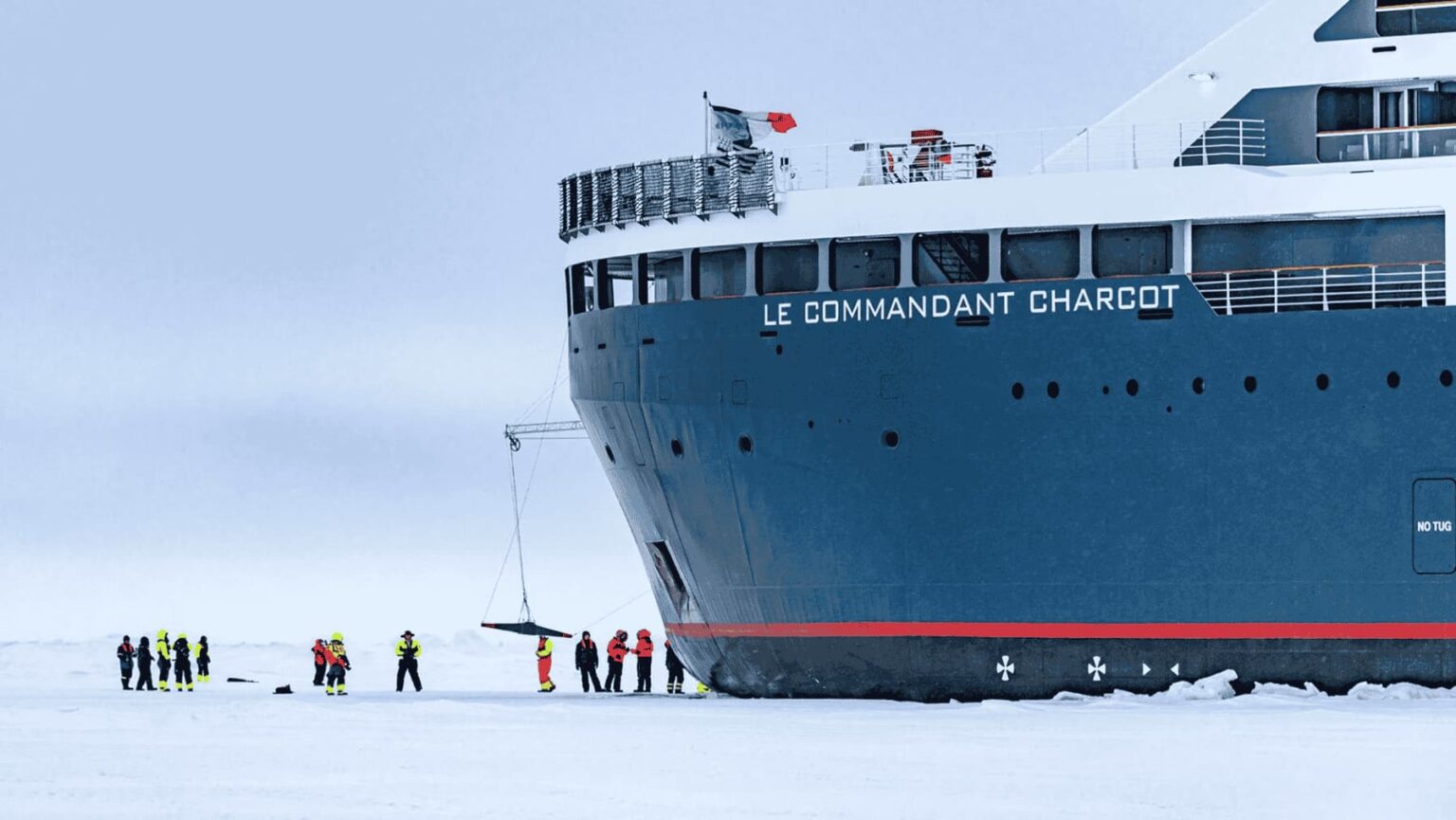In an age where it feels like there’s nothing left to discover, Le Commandant Charcot’s reminds us that the world still has its mysteries. Some are just harder to reach.
There are places in this world that exist just to taunt us, daring us to reach them, and the Northern Pole of Inaccessibility absolutely qualifies as one.
A speck on the Arctic Ocean’s vast canvas, it’s the spot furthest from any landmass, so remote and desolate that even the bravest explorers have only dared to glance at it from a plane. Until now.
On September 12, 2024, Le Commandant Charcot, Ponant’s hybrid-electric polar exploration ‘icebreaker’, reached the North Pole of Inaccessibility. Captain Étienne Garcia didn’t just navigate through the ice, he rewrote the annals of maritime exploration.
“Reaching the North Pole of Inaccessibility is a moment of rare intensity. Above all, it is a collective adventure, made possible thanks to Ponant’s passion and expertise,” Garcia said in a statement.
The world’s only luxury icebreaker, Ponant’s Le Commandant Charcot is capable of cutting through thick ice floes and is the first of its kind to carry passengers to the Geographic North Pole (at 90 degrees north latitude). With maximum guest numbers of 245, the efficient ship can slice through even the most remote areas.
However this wasn’t just a passenger voyage; it was also a scientific pilgrimage. Twenty international scientists boarded Le Commandant Charcot, lugging not only their gear but also the weight of centuries of human curiosity about what lies in the farthest reaches of the Arctic.
Their mission was to collect vital data on one of the most unexplored ecosystems on the planet, a place they hope to find important answers to urgent questions about climate change and ecological fragility.
Reaching the North Pole of Inaccessibility has long been a symbolic victory, the coordinates—85°48’ North, 176°09’ East—are a set of numbers that may look innocent enough, but in reality, they represent a point so remote that it’s a miracle anyone even dreams of going there. First identified in 1909 by Russian explorer Alexander Koltchak, the precise coordinates were only pinned down in 2013 thanks to NASA satellite data.
In 1927 intrepid Hubert Wilkins became the first person to fly over the North Pole of Inaccessibility. But even his daring flight couldn’t break the icy hold this place had on explorers. No one had ever set foot on this stretch of frozen ocean. For nearly a century, it remained a geographical ghost, a place defined by its unattainability.
Le Commandant Charcot was made for such an audacious endeavour
A 150-meter behemoth designed with sustainability at its core, its Polar Class 2 hull is a masterstroke in modern engineering, allowing it to navigate the Arctic ice while minimising environmental impact.

Powered by a hybrid-electric engine fuelled by liquefied natural gas (LNG), this is not your grandfather’s icebreaker. It’s the future of exploration, a delicate dance between technology and nature, where every manoeuvre is carefully considered to leave as light a footprint (or hull-print) as possible.
On this expedition, the stakes were stratospheric. The journey began in Nome, Alaska, taking a route that had more in common with a madman’s fantasy than a cruise itinerary. From Nome, Le Commandant Charcot made her way to Longyearbyen, Spitsbergen, along the Transpolar route.
Along the way, the ship crossed the Magnetic North Pole on September 13, then the Geographic North Pole on September 15, and, finally, achieving the seemingly impossible—reaching the North Pole of Inaccessibility.
This achievement wasn’t just celebrated with champagne (though we can be sure there was some of that, too). It was commemorated with the quiet joy of people who understand that they’ve done something truly extraordinary.
For the crew, the scientists, and the guests aboard Le Commandant Charcot, standing at that icy point must have felt like they were touching the edge of the world. Teetering where no one has teetered before, looking out at the frozen horizon.
For the scientific community, the data collected on this voyage will be invaluable. For the rest of us, it’s a reminder that there are still places on Earth that can astonish us, still frontiers left to cross.








